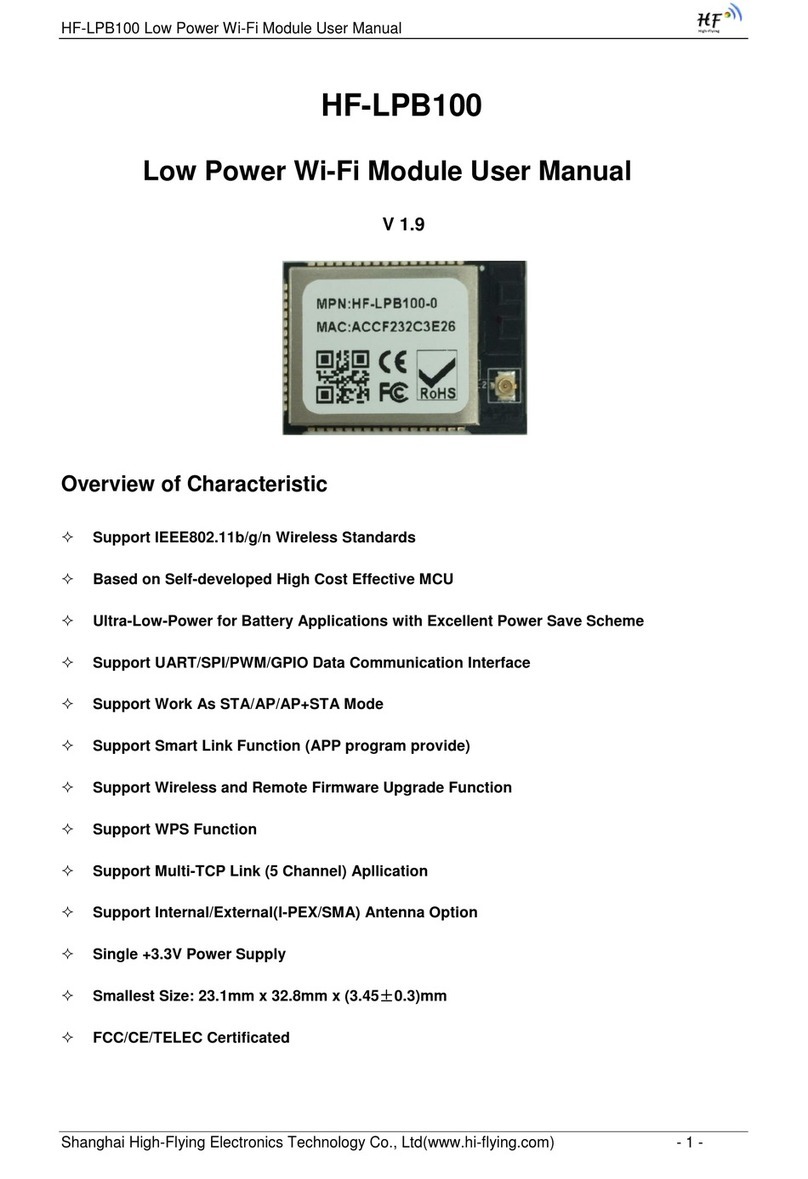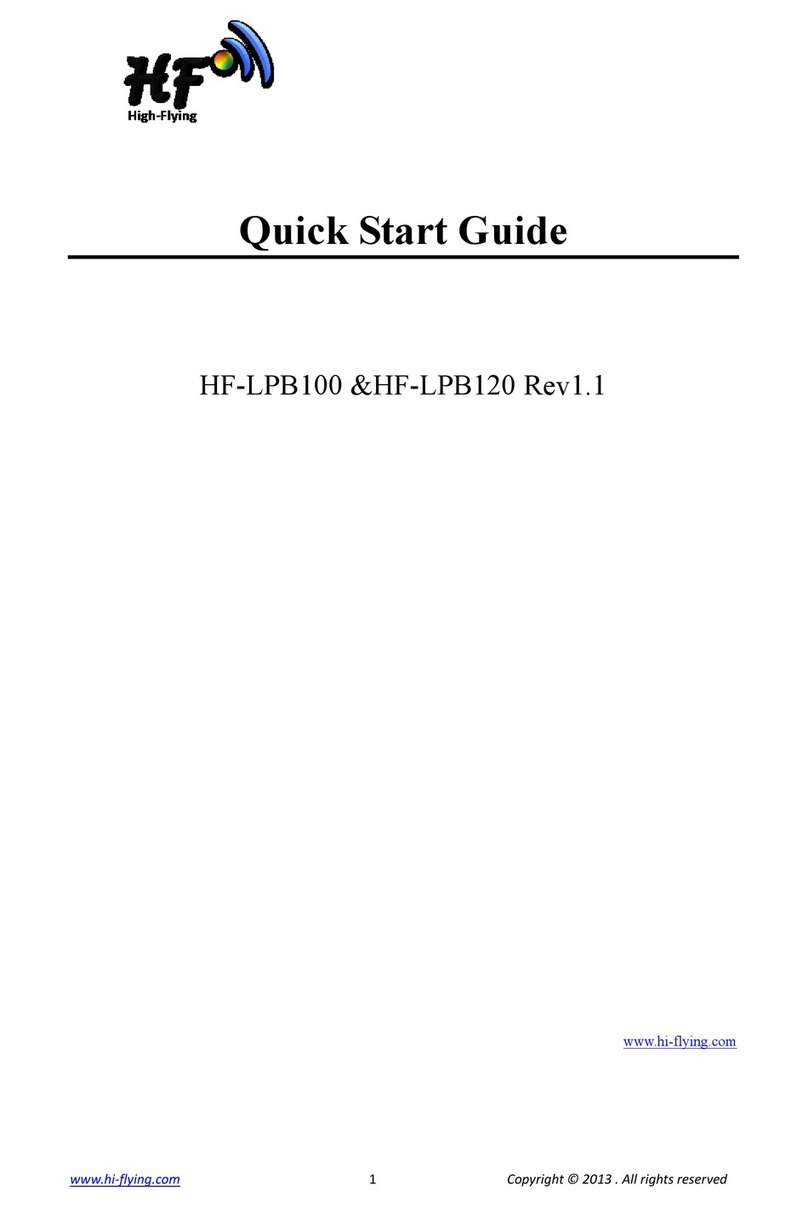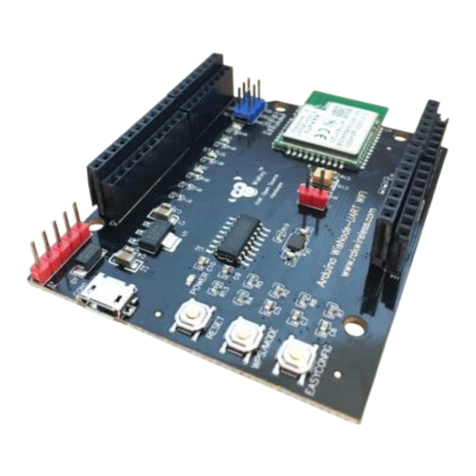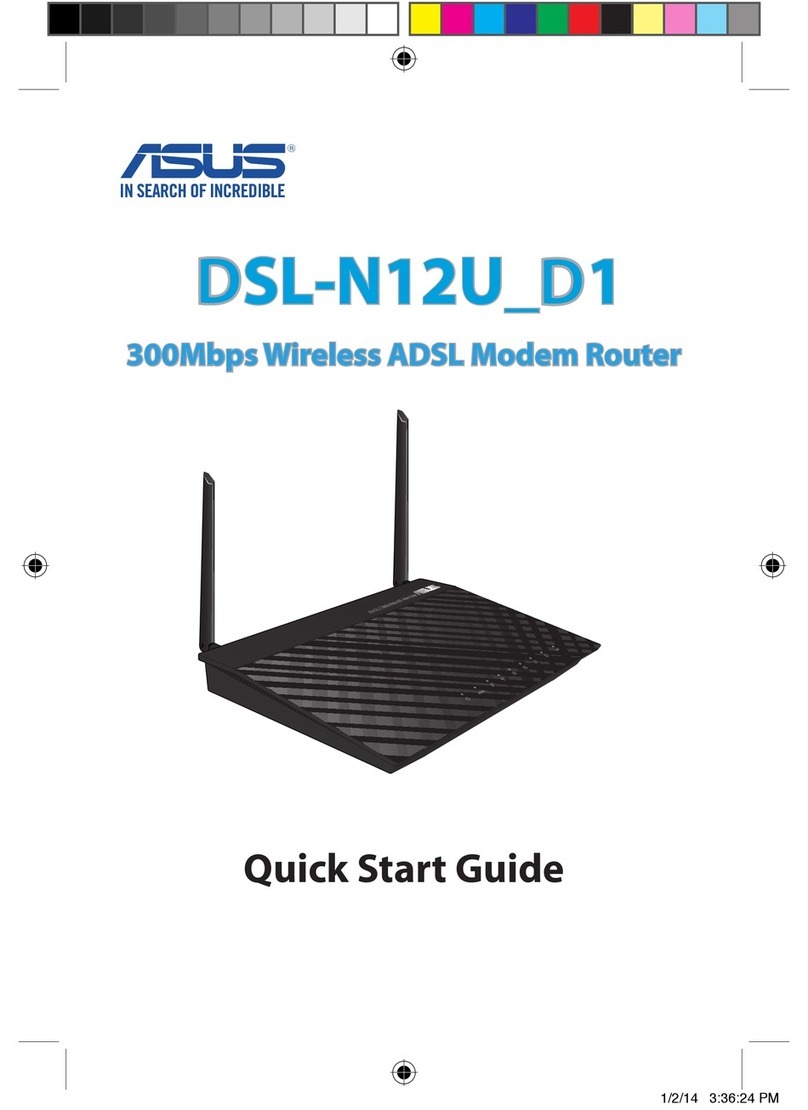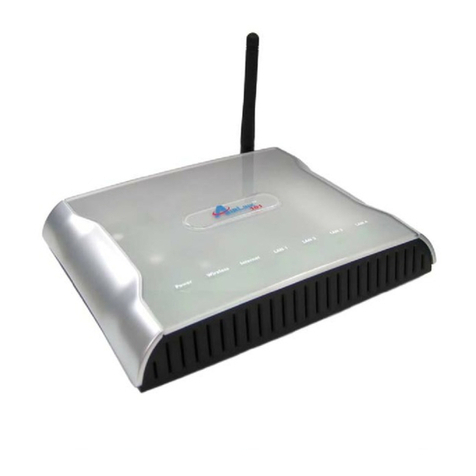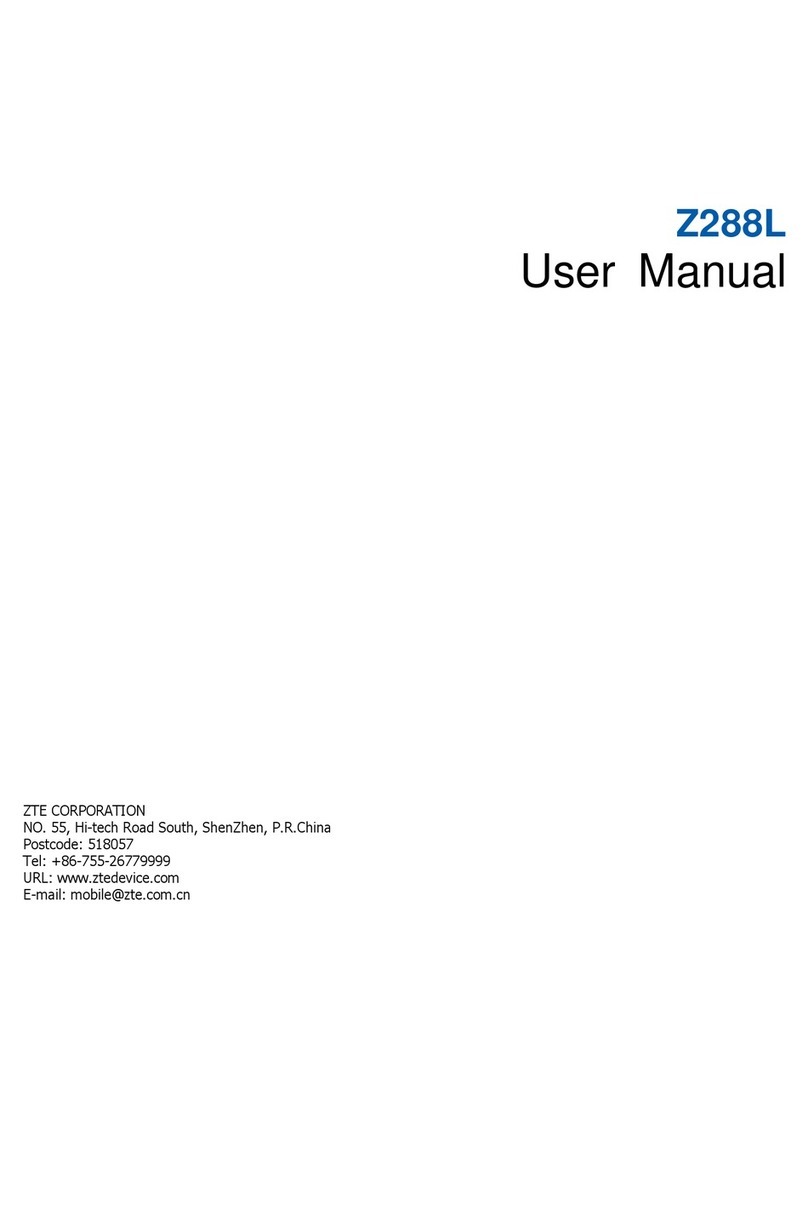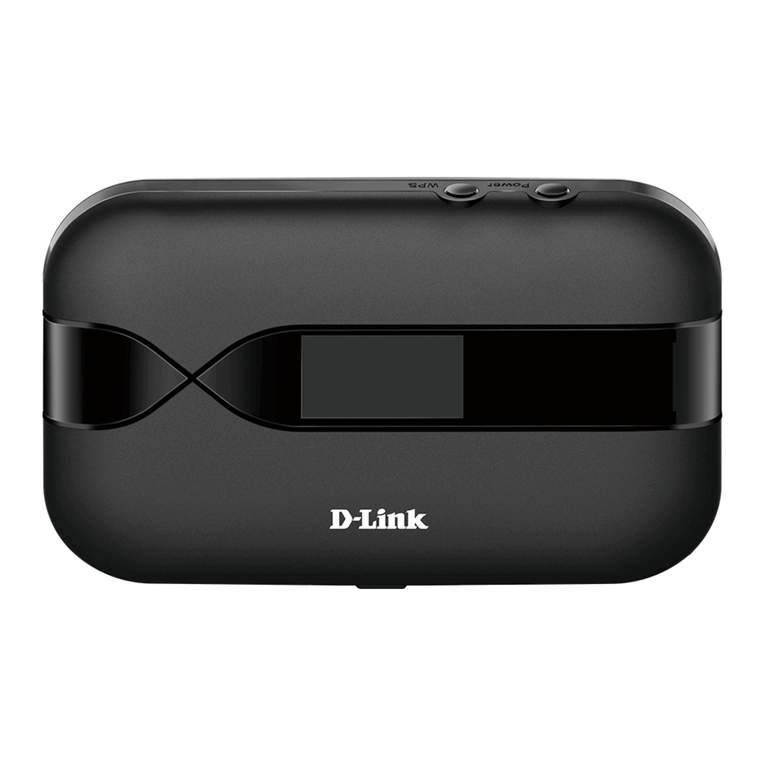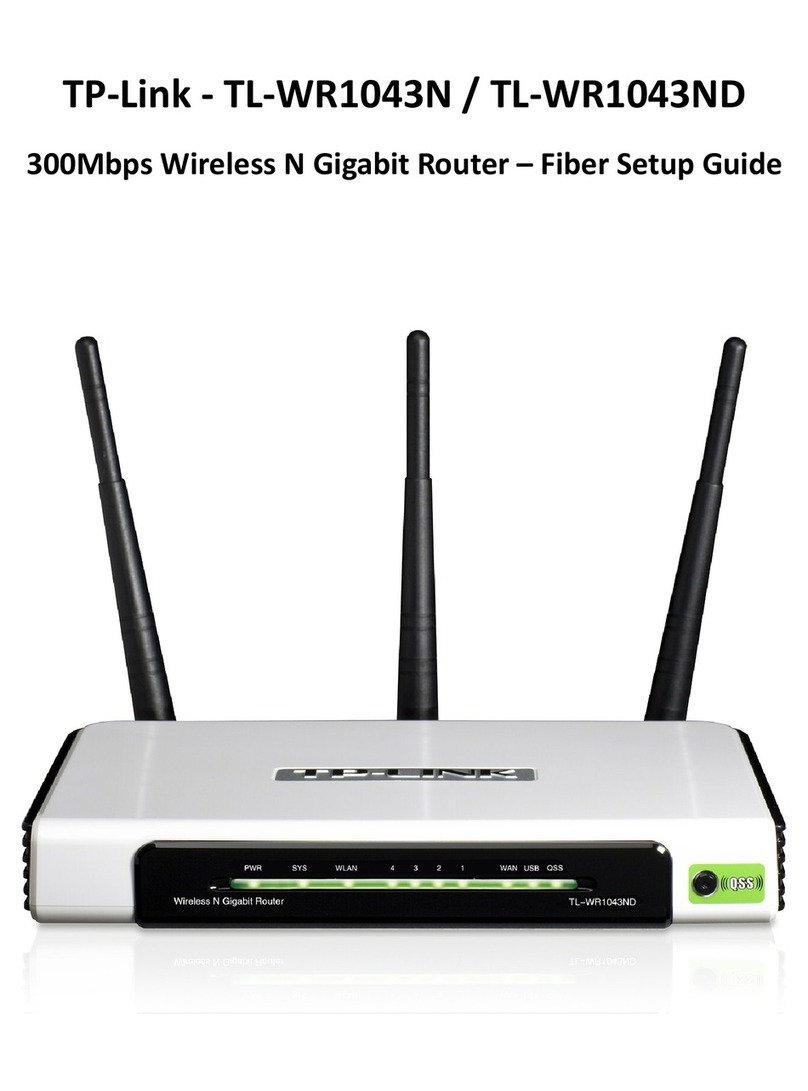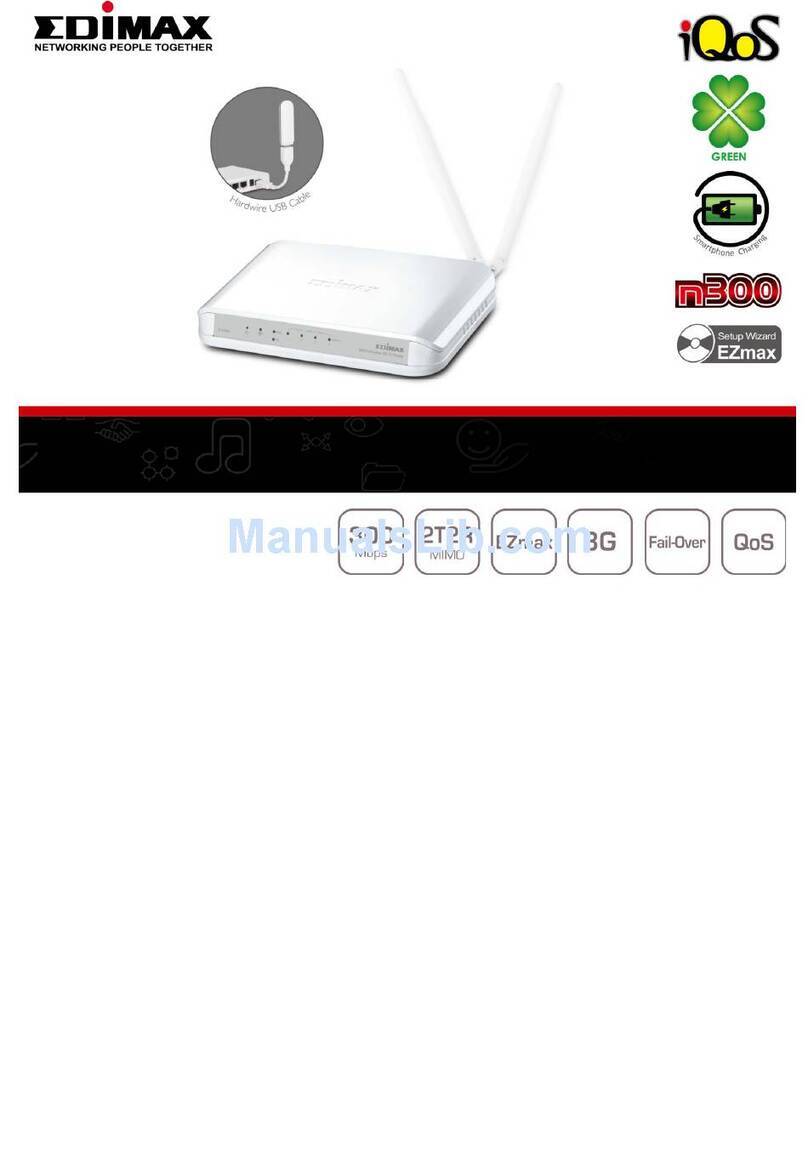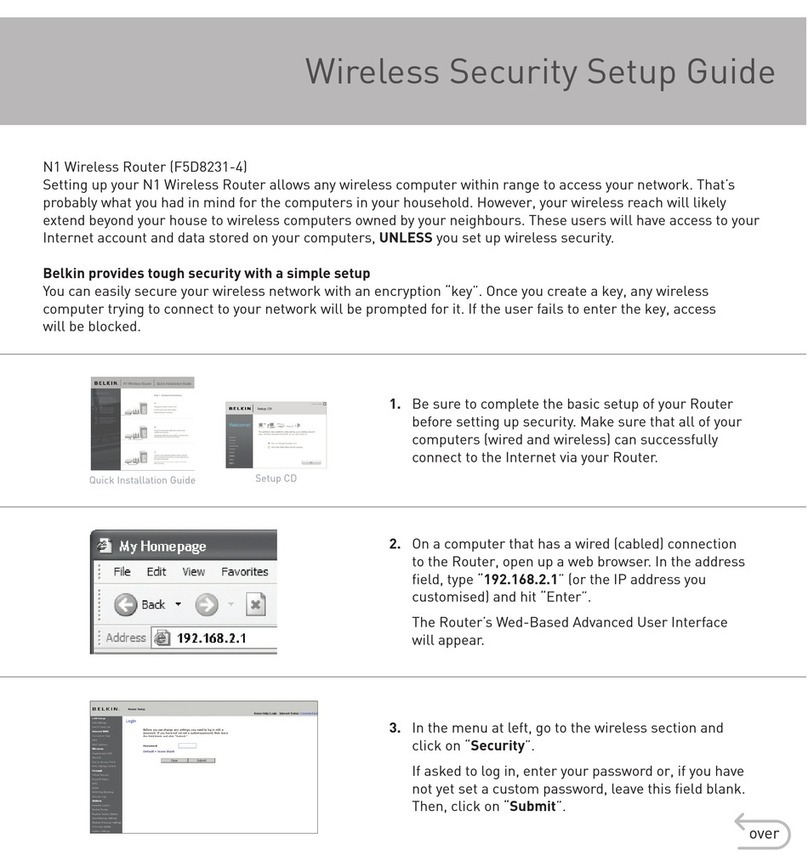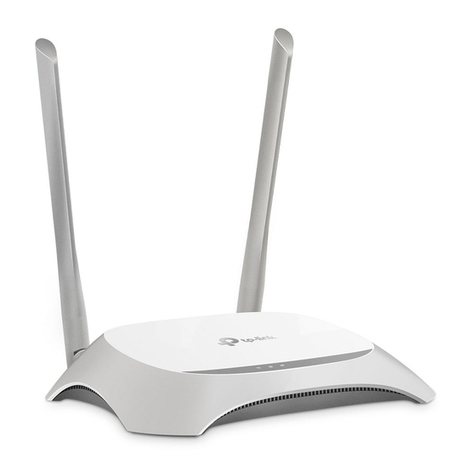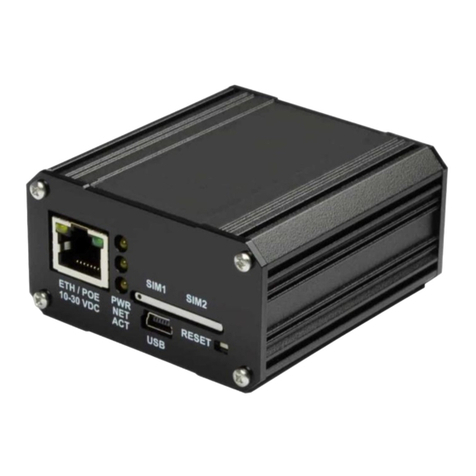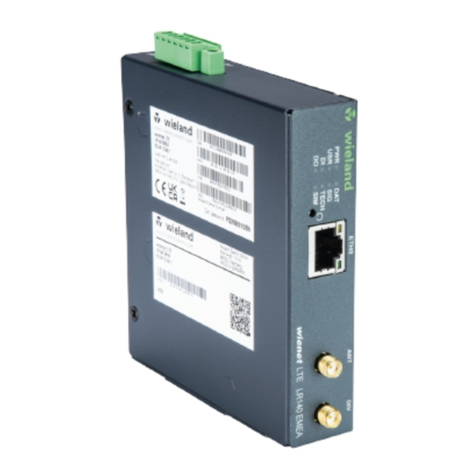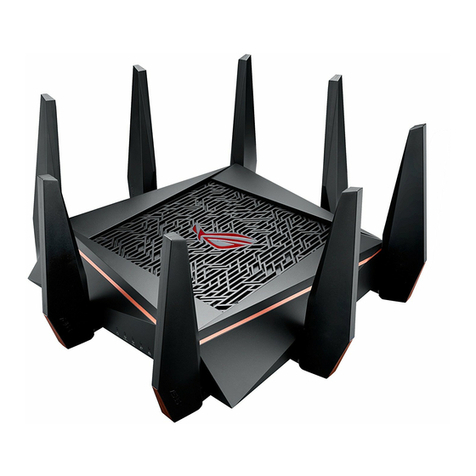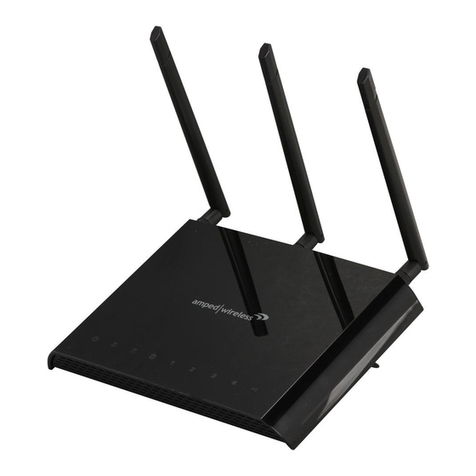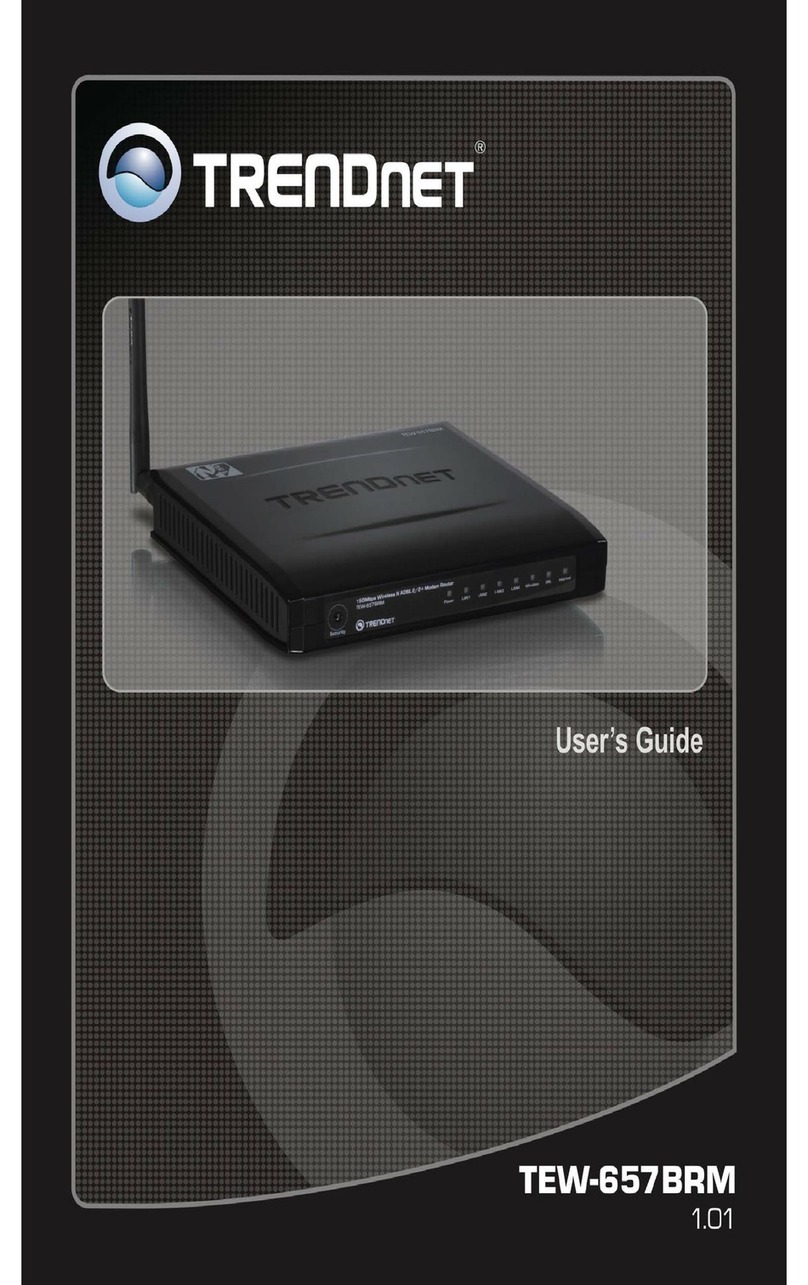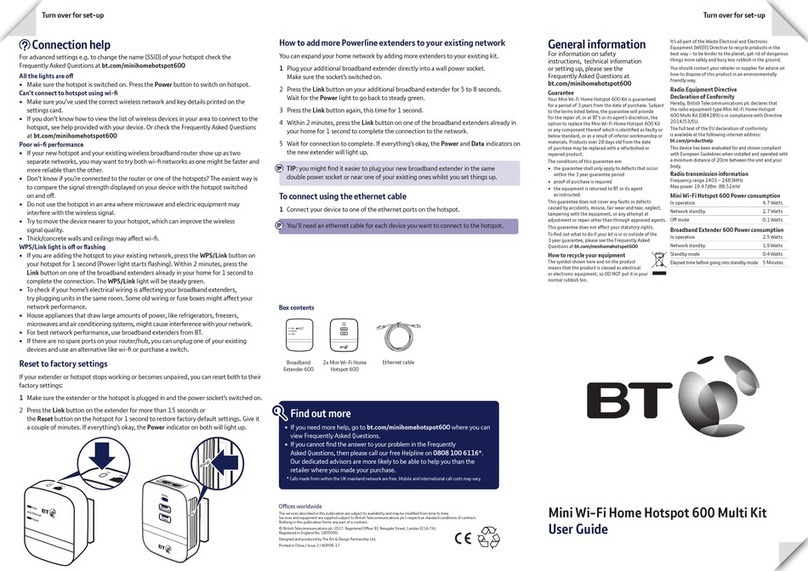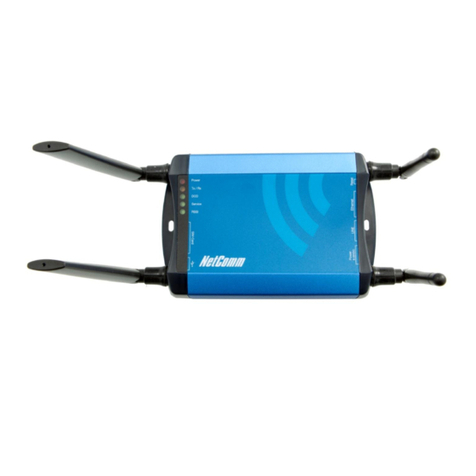High-Flying HF-LPB100 User manual

High-Flying
HF-LPB100 Low Power WiFi Module User Manual
Shanghai High-Flying Electronics Technology Co., Ltd
www.hi-flying.com
- 1 -
HF-LPB100
Low Power WiFi Module User Manual
V 1.3
Overview of Characteristic
Support IEEE802.11b/g/n Wireless Standards
Based on Self-developed High Cost Effective MCU
Ultra-Low-Power for Battery Applications with Excellent Power Save Scheme
Support UART/SPI/PWM/GPIO Data Communication Interface
Support Work As STA/AP/AP+STA Mode
Support Smart Link Function (APP program provide)
Support Wireless and Remote Firmware Upgrade Function
Support WPS Function
Support Multi-TCP Link (5 Channel) Apllication
Support Soft Key Power Control
Support Internal/External Antenna Option
Single +3.3V Power Supply
Smallest Size: 23.1mm x 32.8mm x2.7mm
FCC/CE Certificated

High-Flying
HF-LPB100 Low Power WiFi Module User Manual
Shanghai High-Flying Electronics Technology Co., Ltd
www.hi-flying.com
- 2 -
TABLE OF CONTENTS
LIST OF FIGURES ............................................................................................................................. 6
LIST OF TABLES ............................................................................................................................... 7
HISTORY............................................................................................................................................ 8
1. PRODUCT OVERVIEW ........................................................................................................... 9
1.1. General Description ............................................................................................................ 9
1.1.1 Device Features ............................................................................................................. 9
1.1.2 Device Paremeters ....................................................................................................... 10
1.1.3 Key Application ............................................................................................................ 10
1.2. Hardware Introduction ...................................................................................................... 11
1.2.1. Pins Definition .............................................................................................................. 11
1.2.2. Electrical Characteristics .............................................................................................. 13
1.2.3. Mechanical Size ........................................................................................................... 14
1.2.4. On-board Chip Antenna ............................................................................................... 14
1.2.5. External Antenna ......................................................................................................... 15
1.2.6. Evaluation Kit ............................................................................................................... 15
1.2.7. Order Information ......................................................................................................... 17
1.3. Typical Application ........................................................................................................... 18
1.3.1. Hardware Typical Application ....................................................................................... 18
2. FUNCTIONAL DESCRIPTION .............................................................................................. 20
2.1. Wireless Networking ......................................................................................................... 20
2.1.1. Basic Wireless Network Based On AP (Infrastructure) .................................................. 20
2.1.2. Wireless Network Based On AP+STA .......................................................................... 20
2.2. Work Mode : Transparent Transmission Mode ................................................................ 21
2.3. UART Frame Scheme ........................................................................................................ 22
2.3.1. UART Free-Frame ....................................................................................................... 22
2.3.2. UART Auto-Frame ....................................................................................................... 22
2.4. Encryption ......................................................................................................................... 23
2.5. Power Save Scheme ......................................................................................................... 23
2.6. Parameters Configuration ................................................................................................ 24
2.7. Firmware Update ............................................................................................................... 24
2.8. GPIO/PWM Function ......................................................................................................... 25
2.9. SOCKET B Function ......................................................................................................... 26
2.10. Multi-TCP Link Connection ........................................................................................... 26
3. OPERATION GUIDELINE ..................................................................................................... 28
3.1. Configuration via Web Accessing .................................................................................... 28
3.1.1. Open Web Management Interface ................................................................................ 28
3.1.2. System Page ............................................................................................................... 28
3.1.3. Work Mode Page ......................................................................................................... 29
3.1.4. STA Setting Page......................................................................................................... 29
3.1.5. AP Setting Page ........................................................................................................... 30

High-Flying
HF-LPB100 Low Power WiFi Module User Manual
Shanghai High-Flying Electronics Technology Co., Ltd
www.hi-flying.com
- 3 -
3.1.6. Other Setting Page ....................................................................................................... 31
3.1.7. Account Management Page ......................................................................................... 31
3.1.8. Upgrade Software Page ............................................................................................... 32
3.1.9. Restart Page ................................................................................................................ 32
3.1.10. Restore Page ........................................................................................................... 32
3.2. HF-LPB100 Usage Introduction ........................................................................................ 33
3.2.1. Software Debug Tools .................................................................................................. 33
3.2.2. Network Connection ..................................................................................................... 33
3.2.3. Default Parameter Setting ............................................................................................ 34
3.2.4. Module Debug.............................................................................................................. 34
3.3. Typical Application Examples .......................................................................................... 35
3.3.1. Wireless Control Application ......................................................................................... 35
3.3.2. Remote Management Application ................................................................................. 36
3.3.3. Transparent Serial Port Application .............................................................................. 36
4. AT+INSTRUCTION INTRODUCTION ................................................................................... 37
4.1. Configuration Mode .......................................................................................................... 37
4.1.1. Switch to Configuration Mode ....................................................................................... 37
4.2. AT+ Instruction Set Overview ........................................................................................... 38
4.2.1. Instruction Syntax Format............................................................................................. 38
4.2.2. AT+ Instruction Set....................................................................................................... 39
4.2.2.1. AT+E ........................................................................................................................ 41
4.2.2.2. AT+WMODE ............................................................................................................ 41
4.2.2.3. AT+ENTM ................................................................................................................ 41
4.2.2.4. AT+TMODE .............................................................................................................. 42
4.2.2.5. AT+MID .................................................................................................................... 42
4.2.2.6. AT+VER ................................................................................................................... 42
4.2.2.7. AT+RELD ................................................................................................................. 42
4.2.2.8. AT+FCLR ................................................................................................................. 43
4.2.2.9. AT+Z ........................................................................................................................ 43
4.2.2.10. AT+H .................................................................................................................... 43
4.2.2.11. AT+CFGRD .......................................................................................................... 43
4.2.2.12. AT+CFGWR .......................................................................................................... 43
4.2.2.13. AT+CFGFR ........................................................................................................... 44
4.2.2.14. AT+CFGTF ........................................................................................................... 44
4.2.2.15. AT+UART ............................................................................................................. 44
4.2.2.16. AT+ UARTF .......................................................................................................... 45
4.2.2.17. AT+ UARTFT ........................................................................................................ 45
4.2.2.18. AT+ UARTFL ........................................................................................................ 45
4.2.2.19. AT+ UARTTE ........................................................................................................ 45
4.2.2.20. AT+ SEND ............................................................................................................ 46
4.2.2.21. AT+ RECV ............................................................................................................ 46
4.2.2.22. AT+ PING ............................................................................................................. 46
4.2.2.23. AT+NETP ............................................................................................................. 46

High-Flying
HF-LPB100 Low Power WiFi Module User Manual
Shanghai High-Flying Electronics Technology Co., Ltd
www.hi-flying.com
- 4 -
4.2.2.24. AT+ MAXSK .......................................................................................................... 47
4.2.2.25. AT+ TCPLK ........................................................................................................... 47
4.2.2.26. AT+ TCPTO .......................................................................................................... 48
4.2.2.27. AT+TCPDIS .......................................................................................................... 48
4.2.2.28. AT+SOCKB ........................................................................................................... 48
4.2.2.29. AT+TCPDISB ........................................................................................................ 49
4.2.2.30. AT+TCPTOB ......................................................................................................... 49
4.2.2.31. AT+TCPLKB ......................................................................................................... 49
4.2.2.32. AT+SNDB ............................................................................................................. 50
4.2.2.33. AT+RCVB ............................................................................................................. 50
4.2.2.34. AT+WSSSID ......................................................................................................... 50
4.2.2.35. AT+WSKEY .......................................................................................................... 50
4.2.2.36. AT+ WANN ........................................................................................................... 51
4.2.2.37. AT+ WSMAC ........................................................................................................ 51
4.2.2.38. AT+ WSLK ............................................................................................................ 52
4.2.2.39. AT+ WSLQ............................................................................................................ 52
4.2.2.40. AT+WSCAN .......................................................................................................... 52
4.2.2.41. AT+ WSDNS ......................................................................................................... 52
4.2.2.42. AT+ LANN............................................................................................................. 53
4.2.2.43. AT+WAP ............................................................................................................... 53
4.2.2.44. AT+WAKEY .......................................................................................................... 53
4.2.2.45. AT+WAMAC ......................................................................................................... 54
4.2.2.46. AT+WADHCP ....................................................................................................... 54
4.2.2.47. AT+WADMN ......................................................................................................... 54
4.2.2.48. AT+PLANG ........................................................................................................... 55
4.2.2.49. AT+UPURL ........................................................................................................... 55
4.2.2.50. AT+UPFILE ........................................................................................................... 55
4.2.2.51. AT+UPWEB .......................................................................................................... 56
4.2.2.52. AT+UPCFG ........................................................................................................... 56
4.2.2.53. AT+UPNVR ........................................................................................................... 56
4.2.2.54. AT+UPAUTO ........................................................................................................ 56
4.2.2.55. AT+LOGSW .......................................................................................................... 57
4.2.2.56. AT+LOGPORT ...................................................................................................... 57
4.2.2.57. AT+UPST ............................................................................................................. 57
4.2.2.58. AT+WEBU ............................................................................................................ 57
4.2.2.59. AT+MSLP ............................................................................................................. 58
4.2.2.60. AT+NTPRF ........................................................................................................... 58
4.2.2.61. AT+NTPEN ........................................................................................................... 58
4.2.2.62. AT+NTPTM ........................................................................................................... 59
4.2.2.63. AT+WRMID ........................................................................................................... 59
4.2.2.64. AT+RLDEN ........................................................................................................... 59
4.2.2.65. AT+ASWD ............................................................................................................ 59
4.2.2.66. AT+MDCH ............................................................................................................ 60

High-Flying
HF-LPB100 Low Power WiFi Module User Manual
Shanghai High-Flying Electronics Technology Co., Ltd
www.hi-flying.com
- 5 -
4.2.2.67. AT+TXPWR .......................................................................................................... 60
5. PACKAGE INFORMATION ................................................................................................... 61
5.1. Recommended Reflow Profile .......................................................................................... 61
5.2. Device Handling Instruction (Module IC SMT Preparation) ............................................. 61
5.3. Shipping Information ........................................................................................................ 62
APPENDIX A: HW REFERENCE DESIGN .................................................................................. 63
APPENDIX B: CONTROL GPIO/PWM FUNCTION WITH NETWORK COMMANDS .............. 64
B.1 Network Command ............................................................................................................... 64
B.2 Hexadecimal Network Command ........................................................................................ 67
APPENDIX C: HTTP PROTOCOL TRANSFER .......................................................................... 70
C.1. HTTP AT command .............................................................................................................. 70
C.1.1. AT+ HTTPURL ............................................................................................................. 70
C.1.2. AT+ HTTPTP ............................................................................................................... 70
C.1.3. AT+ HTTPPH ............................................................................................................... 70
C.1.4. AT+ HTTPCN ............................................................................................................... 71
C.1.5. AT+ HTTPUA ............................................................................................................... 71
C.1.6. AT+ HTTPDT ............................................................................................................... 71
C.2. HTTP Example ..................................................................................................................... 71
APPENDIX D: CONTACT INFORMATION .................................................................................. 73

High-Flying
HF-LPB100 Low Power WiFi Module User Manual
Shanghai High-Flying Electronics Technology Co., Ltd
www.hi-flying.com
- 6 -
LIST OF FIGURES
Figure 1. HF-LPB100 View ............................................................................................................. 11
Figure 2. HF-LPB100 Pins Map ...................................................................................................... 11
Figure 3. HF-LPB100 Mechanical Dimension .................................................................................. 14
Figure 4. HF-LPB100 PCB Symbol Size ......................................................................................... 14
Figure 5. Suggested Module Placement Region ............................................................................. 15
Figure 6. HF-LPB100 Evaluation Kit ............................................................................................... 16
Figure 7. HF-LPB100 Order Information ......................................................................................... 17
Figure 8. HF-LPB100 Hardware Typical Application........................................................................ 18
Figure 9. HF-LPB100 Basic Wireless Network Structure ................................................................. 20
Figure 10. HF-A11 AP+STA Network Structure ............................................................................. 21
Figure 11. Socket B function demo ............................................................................................... 26
Figure 12. Multi-TCP Link Data Transmition Structure ................................................................... 27
Figure 13. Open Web Management page ...................................................................................... 28
Figure 14. System Web Page ....................................................................................................... 29
Figure 15. Work Mode Page ......................................................................................................... 29
Figure 16. STA Setting Page......................................................................................................... 30
Figure 17. AP Setting Page ........................................................................................................... 30
Figure 18. Other Setting Page ....................................................................................................... 31
Figure 19. Account Page............................................................................................................... 31
Figure 20. Upgrade SW page........................................................................................................ 32
Figure 21. Restart Page ................................................................................................................ 32
Figure 22. Restore Page ............................................................................................................... 33
Figure 23. STA Interface Debug Connection ................................................................................. 33
Figure 24. AP Interface Debug Connection ................................................................................... 34
Figure 25. “CommTools” Serial Debug Tools ................................................................................. 34
Figure 26. “TCPUDPDbg” Tools Create Connection ...................................................................... 34
Figure 27. “TCPUDPDbg” Tools Setting ........................................................................................ 35
Figure 28. “TCPUDPDbg” Tools Connection ................................................................................. 35
Figure 29. Wireless Control Application ......................................................................................... 35
Figure 30. Remote Management Application ................................................................................. 36
Figure 31. Transparent Serial Port Application .............................................................................. 36
Figure 32. HF-LPB100 Default UART Port Parameters ................................................................. 37
Figure 33. Switch to Configuration Mode ....................................................................................... 37
Figure 34. ”AT+H” Instruction for Help ........................................................................................... 38
Figure 35. Reflow Soldering Profile ............................................................................................... 61
Figure 36. Shipping Information .................................................................................................... 62

High-Flying
HF-LPB100 Low Power WiFi Module User Manual
Shanghai High-Flying Electronics Technology Co., Ltd
www.hi-flying.com
- 7 -
LIST OF TABLES
Table 1 HF-LPB100 Module Technical Specifications .................................................................... 10
Table 2 HF-LPB100 Pins Definition ............................................................................................... 11
Table 3 HF-LPB100 External Antenna Parameters ........................................................................ 15
Table 4 HF-LPB100 Evaluation Kit Interface Description ............................................................... 16
Table 6 Standby Mode Status and Wake Up .................................................................................. 23
Table 7 HF-LPB100 GPIO/PWM Pin Mapping Table ..................................................................... 25
Table 8 HF-LPB100 Web Access Default Setting .......................................................................... 28
Table 9 Error Code Describtion ..................................................................................................... 39
Table 10 AT+ Instruction Set List ................................................................................................... 39
Table 11 Reflow Soldering Parameter ............................................................................................. 61

High-Flying
HF-LPB100 Low Power WiFi Module User Manual
Shanghai High-Flying Electronics Technology Co., Ltd
www.hi-flying.com
- 8 -
HISTORY
Ed. V1.0 08-01-2013 First Version.
Ed. V1.1 09-10-2013 Update AT command.
Ed. V1.2 10-10-2013 Update AT command. Update PWM/GPIO function. Add HTTP protocol demo.
Add auto-frame function.
Ed. V1.3 10-18-2013 Update module view, add nReload Pin wireless upgrade and config description,
add nLink Pin wireless upgrade indication description.

High-Flying
HF-LPB100 Low Power WiFi Module User Manual
Shanghai High-Flying Electronics Technology Co., Ltd
www.hi-flying.com
- 9 -
1. PRODUCT OVERVIEW
1.1. General Description
The HF-LPB100 is a fully self-contained small form-factor, single stream, 802.11b/g/n Wi-Fi module,
which provide a wireless interface to any equipment with a Serial/SPI/USB interface for data
transfer.HF-LPB100 integrate MAC, baseband processor, RF transceiver with power amplifier in
hardware and all Wi-Fi protocol and configuration functionality and networking stack, in embedded
firmware to make a fully self-contained 802.11b/g/n Wi-Fi solution for a variety of applications.
The HF-LPB100 employs the world's lowest power consumption embedded architecture. It has been
optimized for all kinds of client applications in the home automation, smart grid, handheld device,
personal medical application and industrial control that have lower data rates, and transmit or receive
data on an infrequent basis.
The HF-LPB100 integrates all Wi-Fi functionality into a low-profile, 23.1x32.8x 2.7mm SMT module
package that can be easily mounted on main PCB with application specific circuits. Also, module
provides built-in antenna, external antenna option.
1.1.1 Device Features
Single stream Wi-Fi @ 2.4 GHz with support for WEP security mode as well as WPA/WPA2
Based on Self-developed High Cost Performance MCU
Ultra-low-power operation with all kinds of power-save modes.
Includes all the protocol and configuration functions for Wi-Fi connectivity.
Support STA/AP/AP+STA Mode
Support Smart Link Function
Support Wireless and Remote Firmware Upgrade Function
Support Max 6 Channel PWM/GPIO Output
Integrated chip antenna, antenna connector options.
Compact surface mount module 23.1mm x 32.8mm x 2.7mm.
Full IPv4 and IPv6 stack.
Low power RTOS and drivers.
FCC Certified.
RoHS and CE compliant.
Single supply – 3.3V operation.

High-Flying
HF-LPB100 Low Power WiFi Module User Manual
Shanghai High-Flying Electronics Technology Co., Ltd
www.hi-flying.com
- 10 -
1.1.2 Device Paremeters
Table 1 HF-LPB100 Module Technical Specifications
Class Item Parameters
Wireless
Parameters
Certification FCC/CE
Wireless standard 802.11 b/g/n
Frequency range 2.412GHz-2.484GHz
Transmit Power
802.11b: +16 +/-2dBm (@11Mbps)
802.11g: +14 +/-2dBm (@54Mbps)
802.11n: +13 +/-2dBm (@HT20, MCS7)
Receiver Sensitivity
802.11b: -93 dBm (@11Mbps ,CCK)
802.11g: -85 dBm (@54Mbps, OFDM)
802.11n: -82 dBm (@HT20, MCS7)
Antenna Option External:I-PEX Connector
Internal:On-board PCB antenna
Hardware
Parameters
Data Interface UART
SPI, PWM, GPIO
Operating Voltage 2.8~3.6V
Operating Current
Peak [Continuous TX]: ~200mA
Normal [WiFi ON/OFF, DTIM=100ms]:
Average. ~12mA, Peak: 200mA
Standby [WiFi Shutdown]: <200uA
Power Down Switch: <10uA
Operating Temp. -40℃- 85℃
Storage Temp. -45℃- 125℃
Dimensions and Size 23.1mm×32.8mm×2.7mm
Software
Parameters
Network Type STA /AP/STA+AP
Security Mechanisms WEP/WPA-PSK/WPA2-PSK
Encryption WEP64/WEP128/TKIP/AES
Update Firmware Local Wireless, Remote
Customization Web Page Upgrade
Support SDK for application develop
Network Protocol IPv4, TCP/UDP/FTP/HTTP
User Configuration AT+instruction set. Android/ iOS
Smart Link APP tools
1.1.3 Key Application
Remote equipment monitoring
Asset tracking and telemetry
Security
Industrial sensors and controls
Home automation
Medical devices

High-Flying
HF-LPB100 Low Power WiFi Module User Manual
Shanghai High-Flying Electronics Technology Co., Ltd
www.hi-flying.com
- 11 -
1.2. Hardware Introduction
Figure 1. HF-LPB100 View
1.2.1. Pins Definition
Figure 2. HF-LPB100 Pins Map
Table 2 HF-LPB100 Pins Definition
Pin Describtion Net Name Signal
Type
Comments
1,17,32,48
Ground GND Power
2 Debug Pin SWCLK I, PD Debug functional pin,
No connect if not use.
3 NC
4 NC
5 Debug Pin SWD I/O,PU

High-Flying
HF-LPB100 Low Power WiFi Module User Manual
Shanghai High-Flying Electronics Technology Co., Ltd
www.hi-flying.com
- 12 -
6 N.C No connect
7 GPIO Sleep_RQ I.PU GPIO7, No connect if not use.
8 GPIO Sleep_ON O GPIO8, No connect if not use.
9 +3.3V Power DVDD Power
10 N.C No connect
11 PWM/GPIO PWM_1 I/O GPIO11, No connect if not use.
12 PWM/GPIO PWM_2 I/O GPIO12, No connect if not use.
13 GPIO GPIO13 I/O GPIO13, No connect if not use.
14 N.C No connect
15 WPS/GPIO GPIO15 I/O GPIO15, WPS Function Pin.
16 N.C No connect
18 PWM/GPIO PWM_3 I/O GPIO18, No connect if not use.
19 N.C No connect
20 PWM/GPIO PWM_4 I/O GPIO20, No connect if not use.
21 N.C No connect
22 N.C No connect
23 GPIO PWM_5 I/O GPIO23, No connect if not use.
24 N.C No connect
25 Power Control
Switch
PWR_SW I,PU “0” – Power Down Mode(Lowest Power
Consumption)
“1” – Normal mode
26 N.C No connect
27 SPI Interface SPI_MISO
I GPIO27, No connect if not use.
28 SPI Interface SPI_CLK I/O GPIO28, No connect if not use.
29 SPI Interface SPI_CS I/O GPIO29, No connect if not use.
30 SPI Interface SPI_MOSI
O GPIO30, No connect if not use.
31 +3.3V Power DVDD Power
33 N.C No connect
34 +3.3 Power DVDD Power
35 N.C No connect
36 N.C No connect
37 N.C No connect
38 N.C No connect
39 UART0 UART0_TX
O GPIO39, No connect if not use.
40 UART0 UART0_RTS
I/O GPIO40, No connect if not use.
41 UART0 UART0_RX
I GPIO41, No connect if not use.
42 UART0 UART0_CTS
I/O GPIO42, No connect if not use.
43 Wi-Fi Status nLink O Detailed functions see <Notes>
44 Module Boot Up
Indicator
nReady O “0” – Boot-up OK;
“1” – Boot-up No OK;
No connect if not use.;
45 Multi-Function nReload I,PU Detailed functions see <Notes>
46 N.C No connect

High-Flying
HF-LPB100 Low Power WiFi Module User Manual
Shanghai High-Flying Electronics Technology Co., Ltd
www.hi-flying.com
- 13 -
47 Module Reset EXT_RESETn
I,PU “Low” effective reset input.
<Notes>
nReload Pin (Button) function:
1. When this pin is set to “low” during module boot up, the module will enter wireless
firmware and config upgrade mode. This mode is used for customer manufacture.
(High-Flying will provide software tools for customer batch configuration and
upgrade firmware during mass production)
2. After module is powered up, short press this button ( “Low” < 3s ) to make the
module go into “Smart Link “ config mode, waiting for APP to set password and
other information.
3. After module is powered up, long press this button ( “Low” > 3s ) to make the
module recover to factory setting.
High-Flying strongly suggest customer fan out this pin to connector or button for
“Manufacture” and “ Smart Link” application.
nLink Pin (LED) function:
1. At wireless firmware and config upgrade mode , this LED used to indicate configure
and upgrade status.
2. At “Smart Link “ config mode, this LED used to indicate APP to finish setting.
3. At normal mode, it’s Wi-Fi link status indicator
High-Flying strongly suggest customer fan out this pin to LED.
1.2.2. Electrical Characteristics
Absolute Maximum Ratings:
Parameter Condition Min.
Typ.
Max.
Unit
Storage temperature range -45 125 °C
Maximum soldering temperature IPC/JEDEC J-STD-020 260 °C
Supply voltage 0 3.8 V
Voltage on any I/O pin 0 3.3 V
ESD (Human Body Model HBM) TAMB=25°C 2 KV
ESD (Charged Device Model, CDM) TAMB=25°C 1 KV
Power Supply & Power Consumption:
Parameter Condition Min.
Typ.
Max.
Unit
Operating Supply voltage 2.8 3.3 3.8 V
Supply current, peak Continuous Tx 200 mA
Supply current, IEEE PS DTIM=100ms 12 mA
Output high voltage Sourcing 6mA 2.8 V
Output low voltage Sinking 6mA 0.2 V
Input high voltage 2.2 V
Input low voltage 0.8 V

High-Flying
HF-LPB100 Low Power WiFi Module User Manual
Shanghai High-Flying Electronics Technology Co., Ltd
www.hi-flying.com
- 14 -
1.2.3. Mechanical Size
HF-LPB100 modules physical size (Unit: mm) as follows:
Figure 3. HF-LPB100 Mechanical Dimension
HF-LPB100 Module PCB symbol size (mm) as follows:
Figure 4. HF-LPB100 PCB Symbol Size
1.2.4. On-board Chip Antenna
HF-LPB100 module support internal on-board chip antenna option. When customer select internal
antenna, you shall comply with following antenna design rules and module location suggestions:
For customer PCB, RED color region (8.3x18.4mm) can’t put componet or paste GND net;
Antenna must away from metal or high components at least 10mm;

High-Flying
HF-LPB100 Low Power WiFi Module User Manual
Shanghai High-Flying Electronics Technology Co., Ltd
www.hi-flying.com
- 15 -
Antenna can’t be shieldedby any meal enclosure; All cover, include plastic, shall away from
antenna at least 10mm;
Figure 5. Suggested Module Placement Region
High-Flying suggest HF-LPB100 module better locate in following region at customer board, which to
reduce the effect to antenna and wireless signal, and better consult High-Flying technical people when
you structure your module placement and PCB layout.
1.2.5. External Antenna
HF-LPB100 module supports internal antenna and external antenna option for user dedicated
application.
If user select external antenna, HF-LPB100 modules must be connected to the 2.4G antenna
according to IEEE 802.11b/g/n standards.
The antenna parameters required as follows:
Table 3 HF-LPB100 External Antenna Parameters
1.2.6. Evaluation Kit
High-Flying provides the evaluation kit to promote user to familiar the product and develop the detailed
application. The evaluation kit shown as below, user can connect to HF-LPB100 module with the RS-
232 UART, RS485, USB (Internal UART-USB convetor) or Wireless port to configure the parameters,
manage the module or do the some functional tests.
Item Parameters
Frequency range 2.4~2.5GHz
Impedance 50 Ohm
VSWR 2 (Max)
Return Loss -10dB (Max)
Connector Type I-PEX or populate directly

High-Flying
HF-LPB100 Low Power WiFi Module User Manual
Shanghai High-Flying Electronics Technology Co., Ltd
www.hi-flying.com
- 16 -
Figure 6. HF-LPB100 Evaluation Kit
Notes: User need download USB - UART port driver from High-Flying web or contact with technical
support people for more detail.
The external interface description for evaluation kit as follows:
Table 4 HF-LPB100 Evaluation Kit Interface Description
Function Name Description
External
Interface
COM1 Main data/command RS-232 interface
RS485 Main data/command RS-485 interface
JTAG JTAG data debug interface (Not for user use)
USB2TTL UART to USB debug interface. (For PC without
RS232, need load driver). Can be Power input.
USB DEBUG
USB2.0 data interface.
DC Jack DC jack for power in, 5~18V input.
DC5-18V DC jack for power in, 5~18V input.
BAT 2 Li-Battery Power Supply.
EXT PORT HF-LPB100 GPIO function extend interface
connector
JMP1,JMP2 Reserved, No Jumper required.
JMP3 4Pin USB or RS232 Jumper. Left jump select USB.
JMP6 3Pin RS485 Jumper. No jump selects RS232.

High-Flying
HF-LPB100 Low Power WiFi Module User Manual
Shanghai High-Flying Electronics Technology Co., Ltd
www.hi-flying.com
- 17 -
1.2.7. Order Information
Base on customer detailed requirement, HF-LPB100 series modules provide different variants and
physical type for detailed application.
Figure 7. HF-LPB100 Order Information
LED Power 3.3V Power Indicator
nLink nLink -WiFi LINK Indicator
See 1.2.1
nReady
nReady – Module Bootup Ready Indicator
On (“low”)- Module bootup OK;
Off (“high”)- Mouule botup failed;
Twinkle- Remote Upgrade Ongoing;
Sleep_ON
Sleep_ON-Module asleep or awake Indicator
On (“low”)- Module in shundown(deep sleep) status;
Off (“high”)- Mouule in normal status;
Twinkle- Bootloader Upgrade Ongoing;
Button nReset Used to reset the module.
nReload
Restore factory default configuration after push this
pin more than 3s.
See 1.2.1
WPS WPS Button (Reserved, No Use)
Sleep_RQ Pin Sleep Control button, more than 3s to put
module in standby mode.

High-Flying
HF-LPB100 Low Power WiFi Module User Manual
Shanghai High-Flying Electronics Technology Co., Ltd
www.hi-flying.com
- 18 -
1.3. Typical Application
1.3.1. Hardware Typical Application
Figure 8. HF-LPB100 Hardware Typical Application
Notes:
nReset- Module hardware reset signal. Input. Logics “0” effective.
There is pull-up resister internal and no external pull-up required. When module power up or some
issue happened, MCU need assert nRST signal “0” at least 10ms, then set” 1” to keep module fully
reset.
nLink- Module WIFI connection status indication. Output.
(This pin is recommend to connect to LED, indicate status when the module in wireless
upgrade mode)
When module connects to AP (AP associated), this pin will output “0”. This signal used to judge if
module already at WiFi connection status. Thers is pull-up resister internal and no external pull-up
required. If nLink function not required, can leave this pin open.
nReady- Module boot up ready signal. Output. Logics “0” effective.
The module will output “0” after normal boot up. This signal used to judge if module finish boot up and
ready for application or working at normal mode. If nReady function not required, can leave this pin
open.
nReload- Module restore to factory default configuration.Input. Logics “0” effective.

High-Flying
HF-LPB100 Low Power WiFi Module User Manual
Shanghai High-Flying Electronics Technology Co., Ltd
www.hi-flying.com
- 19 -
(This pin is recommend to connect to button, is used to enter wireless upgrade mode)
User can de-assert nReload signal “0” more than 3s through button or MCU pin, then release, module
will restore to factory default configuration and re-start boot up process.. If nReload function not
required, can leave this pin open.
Sleep_RQ- Module Pin Sleep Control. Input.
The user should de-assert this pin low “0”, after 3’s assert to high ”1” to put the module to sleep status.
Also at the deep sleep/standby mode, user can de-assert this pin low “0”, after 1’s assert to high ”1” to
put the module to wake up the module. If Sleep_RQ function not required, can leave this pin open.
Sleep_ON- Module Pin Sleep Indicator. Output.
This pin is used to indicate that the module is asleep (Module output “0”) or awake (Module output “1”)
status. If user doesn't use pin sleep function, can leave this pin open.
UART0_TXD/RXD- UART port data transmit and receive signal.

High-Flying
HF-LPB100 Low Power WiFi Module User Manual
Shanghai High-Flying Electronics Technology Co., Ltd
www.hi-flying.com
- 20 -
2. FUNCTIONAL DESCRIPTION
2.1. Wireless Networking
HF-LPB100 module can be configured as both wireless STA and AP base on network type. Logically
there are two interfaces in HF-LPB100. One is for STA, and another is for AP. When HF-LPB100
works as AP, other STA equipments are able to connect to wireless LAN via HF-LPB100 module.
Wireless Networking with HF-LPB100 is very flexible.
Notes:
AP: that is the wireless Access Point, the founder of a wireless network and the centre of the network
nodes. The wireless router we use at home or in office may be an AP.
STA: short for Station, each terminal connects to a wireless network (such as laptops, PDA and other
networking devices) can be called with a STA device.
2.1.1. Basic Wireless Network Based On AP (Infrastructure)
Infrastructure: it’s also called basic network. It built by AP and many STAs which join in.
The characters of network of this type are that AP is the centre, and all communication between STAs
is transmitted through the AP. The figure following shows such type of networking.
Figure 9. HF-LPB100 Basic Wireless Network Structure
2.1.2. Wireless Network Based On AP+STA
HF-LPB100 module support AP+STA network mode, means module support one AP interface and
one STA interface at the same time, as following figure,
Other manuals for HF-LPB100
2
Table of contents
Other High-Flying Wireless Router manuals


